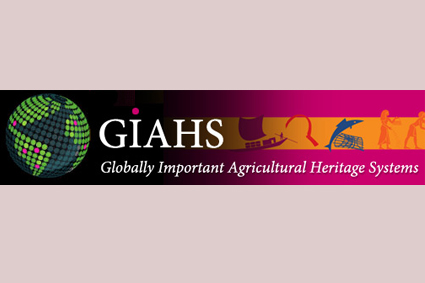
The Globally Important Agricultural Heritage Systems (GIAHS) Initiative came out of a common understanding at the World Summit on Sustainable Development in 2002 of the importance of conserving and enhancing agroecosystems with exceptional agrobiodiversity, local knowledge and socio-cultural vigor. The intention is not preservation of people and their systems as protected areas, but rather recognition of their intrinsic values and attracting support for their dynamism and future sustainability.
The GIAHS International Forum (Ishikawa, Japan, 29 May-1 June) reviewed the overall importance and justification for classification of GIAHS sites as well as documented and shared site specific experience. 200 potential sites with exceptional agricultural systems have been identified, subject to further review and confirmation of their suitability according to five criteria including economic, environmental and social sustainability, cultural systems and historical value, unique agrobiodiversity and landscapes. Classification requires multistakeholder engagement at local level with explicit support from local authorities and national government. GIAHS was formally launched at WSSD in 2002. FAO, IFAD, GEF, the Swaminathan Foundation and local and national governments participate in GIAHS and provide financial and other resources. There were 19 GIAHS sites in developed and developing countries at the outset of the Forum.
Progress has been particularly rapid in some countries in Asia. China has identified multiple potential sites and has initiated a national initiative for Chinese NIAHS including branding of products and high level of engagement of local governments. There is similar progress in Japan for an OECD country and worldwide other current sites are in Algeria, Chile, India, Peru and the Philippines.
During the conference Thomas Price, GFAR Senior Officer on Agricultural Innovation and Society, was appointed Chair of the GIAHS Scientific Committee. This has the role of developing the criteria for selection and monitoring of GIAHS sites. It includes regular consideration of proposals for new sites and review of the annual reports from established sites. In future this will include periodic review of the sites as status is not permanent and is conditional on performance assessment on a five year cycle. During the Forum, the joint meeting of the GIAHS Committees approved the addition of 7 sites and deferred decision on one site pending further information.
Discussions were at a high level with representatives of research, policy makers and aggregate stakeholders from the sites. For example, Provincial Governors from China and Japan attended as well as farmer, NGO and research institution representatives.
